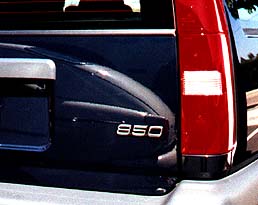 |
 |
More On Buying An Older VolvoBill Webb
Volvos built in the '60s and '70s were noisy and hot. They lacked the insulation and sound-deadening material used in later models, so if you're considering buying your fantasy Volvo and reliving the good old days, be ready to compromise. You will need to spend money to update your purchase to '90s driving standards. Giving up your automatic transmission for a 20-year-old four speed and overdrive for commuting in big city traffic can make you wish you had your 240 or Ford Escort back.
If you think this sounds like a list of reasons not to buy that Volvo you enjoyed 20 years ago, it is. I'll say it again: make sure you really know what you want. For almost 30 years, I drove to work in a number of older Volvos in the worst traffic in the nation. I lived seven miles from downtown Los Angeles and I saw a variety of old cars on the freeways. There were Morgans, Mustangs, Thunderbirds, Avantis, Jaguars, Porsches and older Volvos such as 444s, 122s and 1800s. Over the years, my work cars consisted of a 1958 Volvo 444, a 1959 Volvo 122, a 1963 Studebaker Hawk, a 1966 Volvo 122, a 1966 Jaguar Mark II, a 1964 Volvo 1800 and a 1978 Volvo 262 Bertone. My so-called work car was my "only" car as I couldn't afford a second car. Rough estimates give me a figure of over 800,000 miles driving Volvos over the last 38 years. You can still find older Volvos at reasonable prices. I suggest spending a lot of time checking our [VSA] club classified ads and your local small town newspapers. Large publications such as the Los Angeles Times are usually reserved for more expensive late models, but occasionally you will see a 544, 122 or 1800 for sale. Most of the early models still on the road are very high mileage and can require extensive repair. Paint, upholstery and engine overhaul can cost $5,000, sometimes far more than the car is worth. This, however, does not stop many owners from restoring their cars to show calibre.
Bill Webb is the autor of Swedish Iron and president of the southern California chapter of Volvo Sports America. The text of this article originally appeared in the May-June 1996 issue of the Volvo Western States Magazine and is used here by permission of the author.Editor's note: I look at it this way -- you might spend $10,000 on buying and/or restoring/modifying a classic Volvo to "new" condition, or you might spend $10,000 on a bottom-of-the-line Dodge Neon. The Neon's a nice little car, but which would you rather drive for the next ten years? --Phil
|
 Older model Volvos can easily be updated with insulation and steering and handling modifications. With this approach, you can restore your prize and enjoy many years of driving pleasure.
Older model Volvos can easily be updated with insulation and steering and handling modifications. With this approach, you can restore your prize and enjoy many years of driving pleasure.